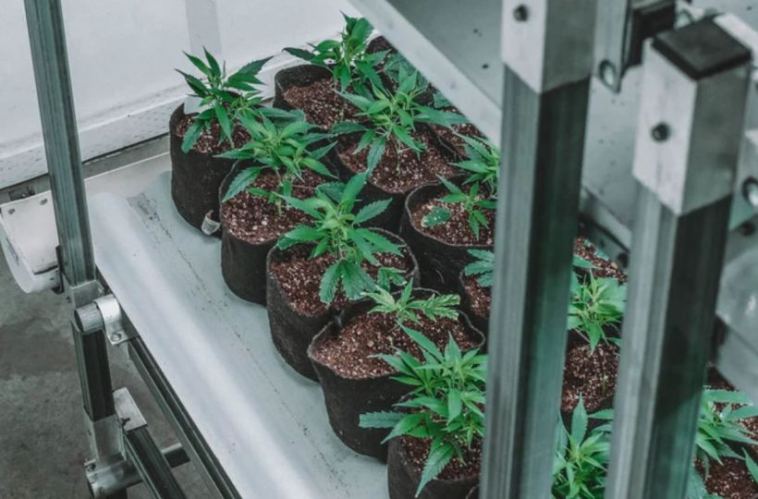- Like
- SHARE
- Digg
- Del
- Tumblr
- VKontakte
- Flattr
- Buffer
- Love This
- Save
- Odnoklassniki
- Meneame
- Blogger
- Amazon
- Yahoo Mail
- Gmail
- AOL
- Newsvine
- HackerNews
- Evernote
- MySpace
- Mail.ru
- Viadeo
- Line
- Comments
- Yummly
- SMS
- Viber
- Telegram
- JOIN
- Skype
- Facebook Messenger
- Kakao
- LiveJournal
- Yammer
- Edgar
- Fintel
- Mix
- Instapaper
- Copy Link
Introduction
In recent months, more and more countries have tried to remove CBD from the hazardous pharmaceutical list since the component is a useful option to counter medication, with fewer adverse effects than others.
It is anticipated that the CBD market will reach $22 billion by 2022, and technology will play a key part in its development.
The only way to assist CBD inventors and farmers in reaching their target audience, technology, was by changing the current supply chain.
In 2020, technology recorded a steady development, and the CBD industry had no chance to take advantage of its advances.
By automatically integrating, reading, and transforming data from automated systems, like lighting, environmental controls, or autonomous irrigation systems.
In assisting biotech firms in the CBD environment artificial intelligence has also played a huge role in doing research, by obtaining extensive information from numerous sources and by providing future forecasts.
Now that this data is easily accessible, the firms may rapidly and efficiently offer items to the end-users by using AI and machine learning again.
What distinguishes CBD from traditional agriculture?
Firstly, it is necessary to use complicated equipment and machinery that can carry out digging, planting, and plowing activities. The accurate assessment of temperature, soil, air, water, and technological devices is necessary for CBD agriculture to assist farmers in the harvesting of hemp plants. Cannabis employs technology-driven ways to turn the hemp plant into various CBD products, such as effective CBD hemp capsules, oils, lotions, and steam. Some items are manufactured by hands alone as they demand delicate handling; others enable equipment driven by technology.
Technology and CBD industry
- Limited options for CBD extraction existed a few years ago. But new types of extraction and consequently a broader range of end products were created with the use of technological instruments. Supercritical CO2 extraction, using higher temperature and pressure to turn gaseous CO2 into a super critic fluid, is today the most common and sophisticated technology on the market. CO2 has liquid and gas characteristics in this form and works as a solvent that separates the various components of the plant. The cleanest, safest, and the quickest process is considered by experts to extract super-critical CO2 from hemp flowers. waxes and oils.
- Hemp plants are expensive and difficult to grow because they require certain conditions. Even when the farmer lives in a warm area, light and natural circumstances need not concern, but those who cultivate indoor plants need to invest in top-quality equipment as they need high-intensity discharge lights to produce an atmosphere for the cultivation of cannabis. As predicted, these powerful lights are costly and energy-efficient.
- The CBD industry has received alternative, cheaper, and more environmentally friendly LED lamps with the development of technology.
- According to Statista, CBD’s consumer sales are anticipated to rise significantly from a half-billion dollars in 2018 to more than $1.8 billion by 2022. Other estimates anticipate that the CBD business will increase its revenue over the next 10 years to $75 billion Partly because of a strong market trend after the adoption of the 2018 US Hemp Farming Act which eliminates hemp as a restricted product or drug under Schedule 1, provided that it contains 0.3% or less by weight of THC. The shift in the categorization of hemp has dramatically boosted the hemp plant’s domestic supply and allowed a number of farmers to undertake hemp production.
- CBD products have limited bioavailability without the use of technology. There are many benefits of CBD which is well-known. When consumed orally as edibles or oil, the human body only absorbs 20% of the chemical from the circulation and removes the remainder of 80%. Why? CBD is not soluble in the form of oil, and simply cannot be absorbed by the human body. Researchers have sought a way to improve bioavailability in this setting. The more effective the CBD industry is, the greater its biological availability. It is because CBD molecules may reach the circulation and the body absorbs more than 20 percent that nanotechnology appears to be the answer to this. But if farmers and producers can use technology to manufacture goods made from CBD hemp flowers that are biochemically adapted, they can supply items that match the particular physiological requirements of the user. CBD firms produce items based on the bodily responses of their customers to various products with the assistance of technology. In certain cases, buyers can even tailor their items.
Conclusion
The market nowadays is flooded with the same-grade items. However, customers search for customized CBD products that fit their specific demands. Manufacturers may now investigate the demands of their audiences and adapt their products to offer a larger selection of individual items.
Buyers can scan the receipt of the goods to find out more about their origin and production process until all firms integrate the blockchain into their production operations. When manufacturers integrate the technology into their operations, new industry standards might be established.
CBD is an always-changing business, which is further helped by technological progress. The current advancements offer fresh chances for the industry to thrive and expand. The future seems bright for the firms who are prepared to make improvements that the sector can bring.


